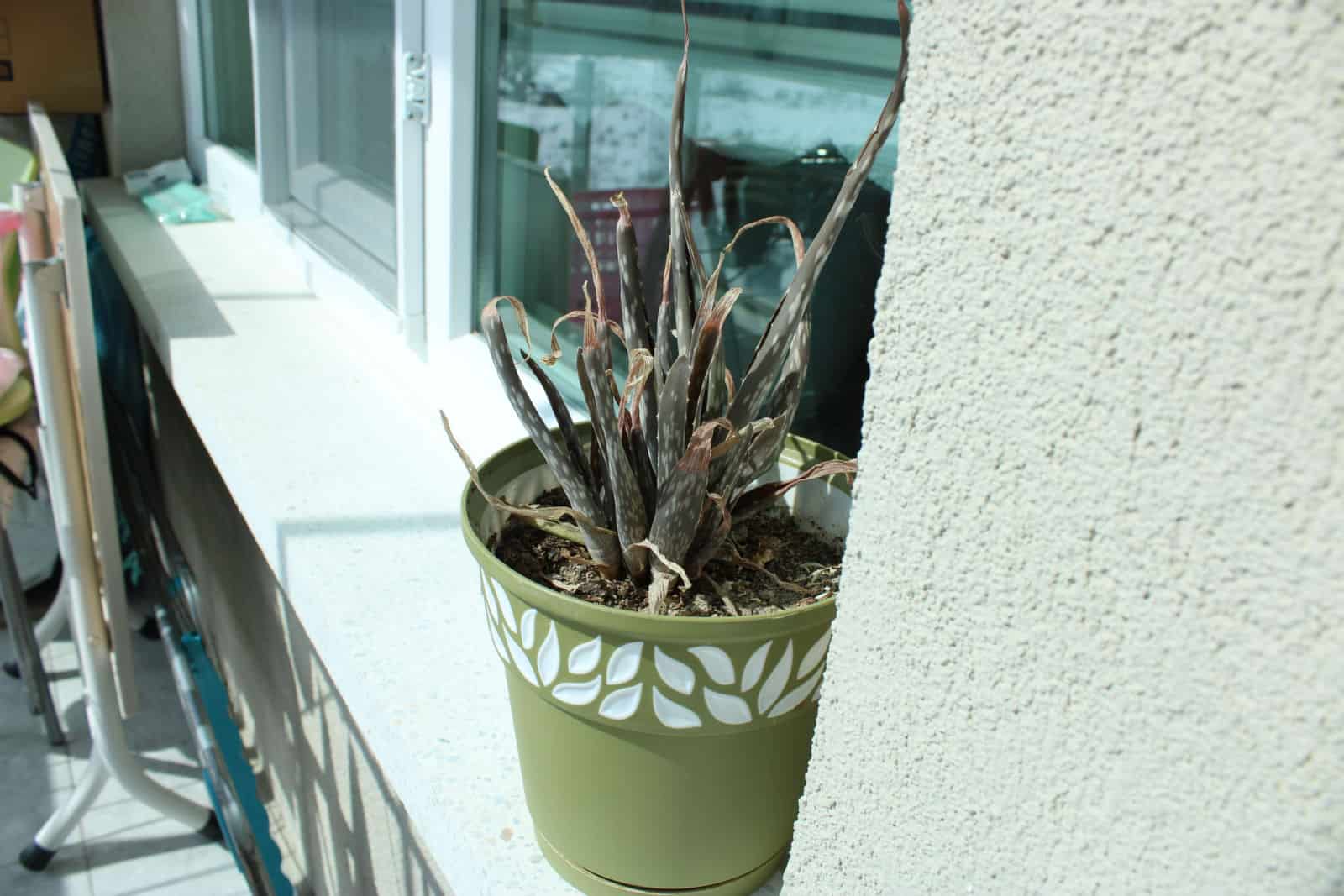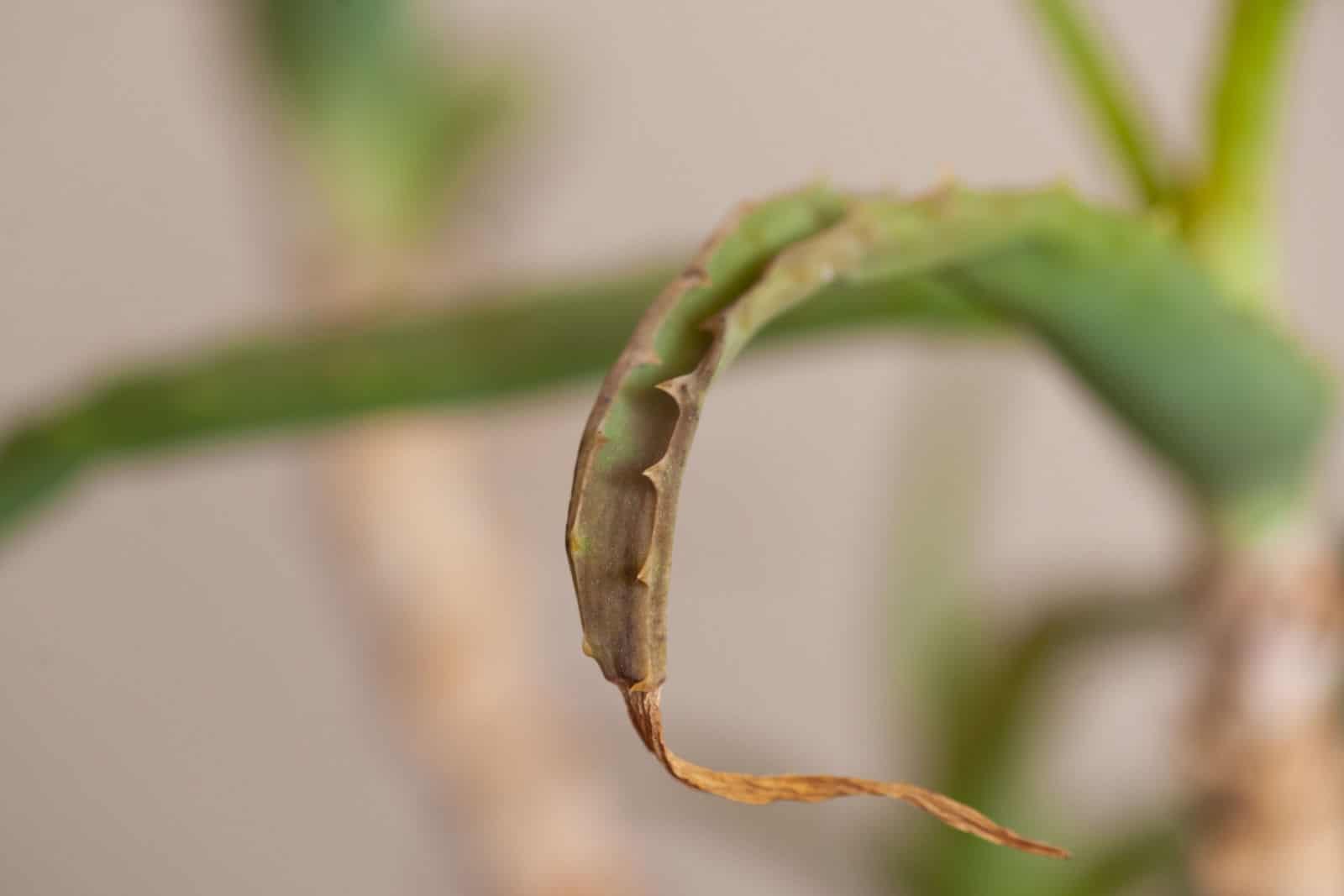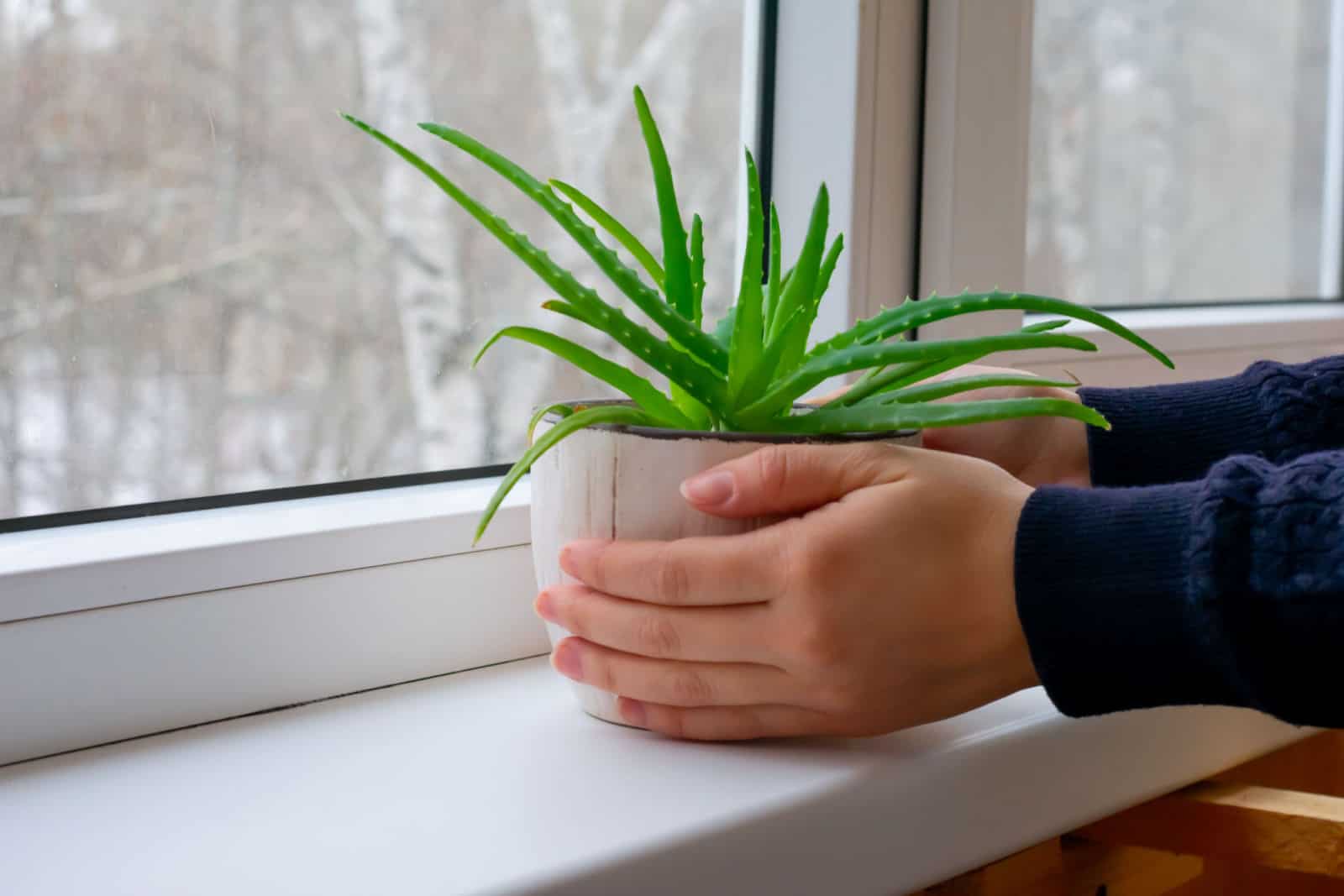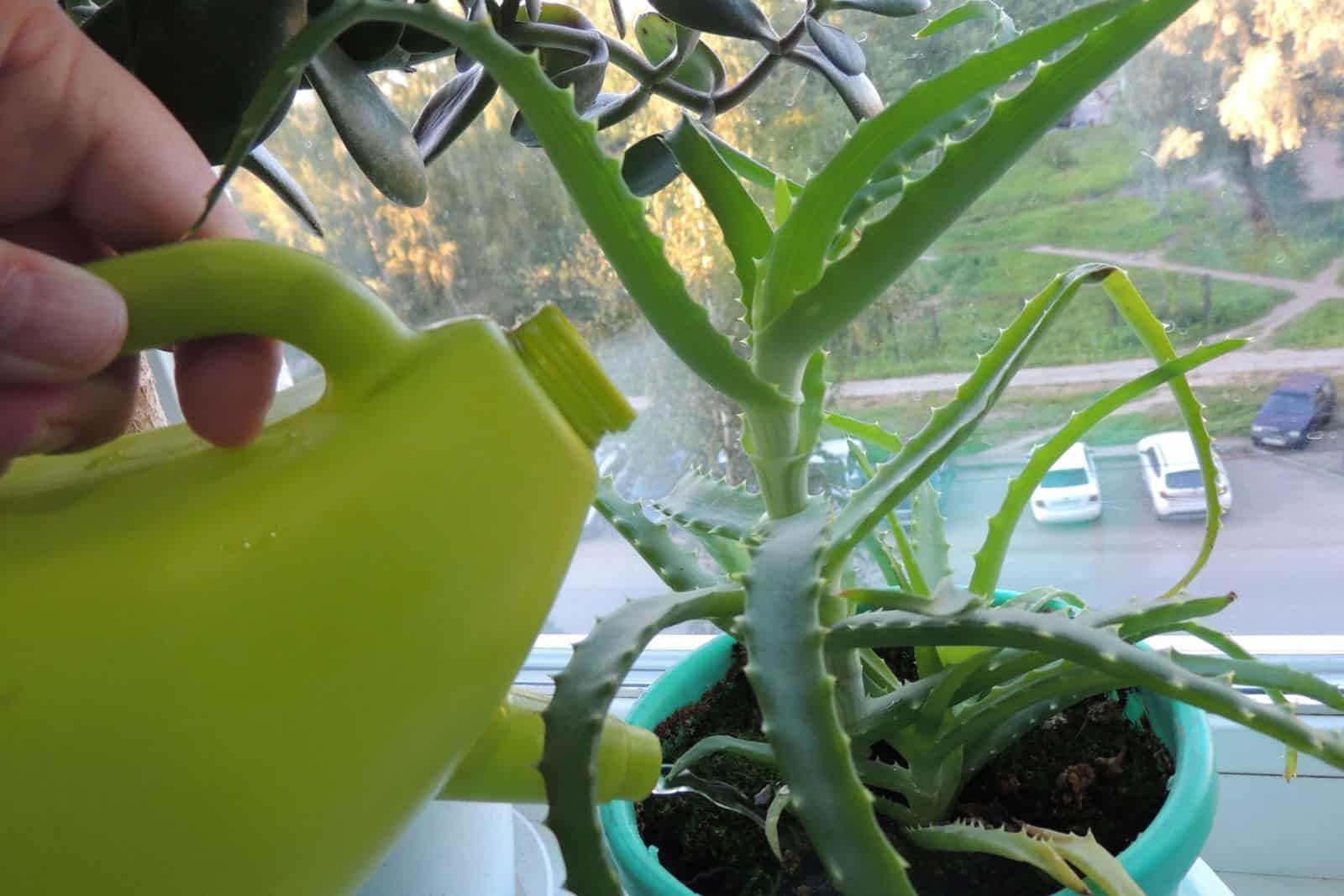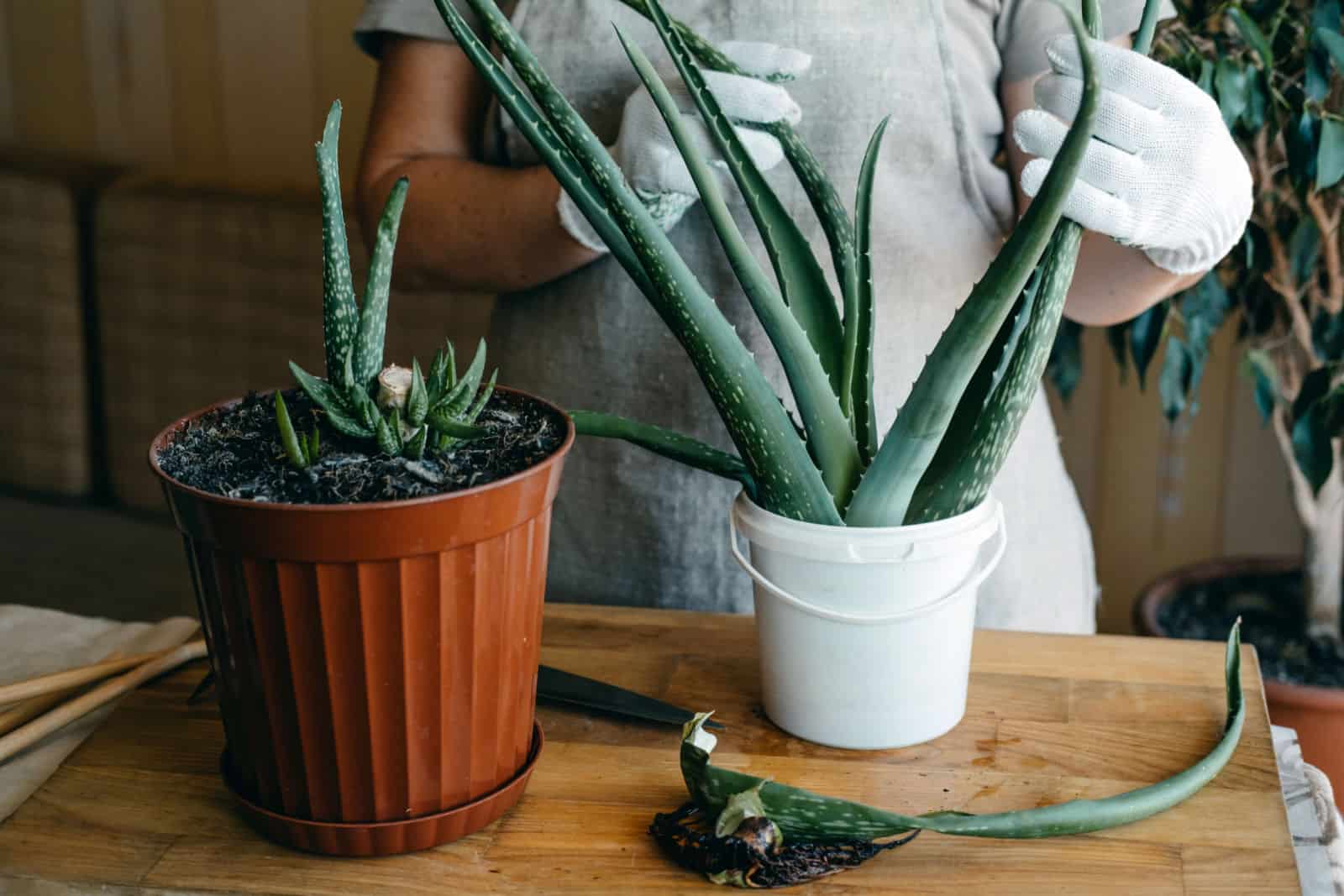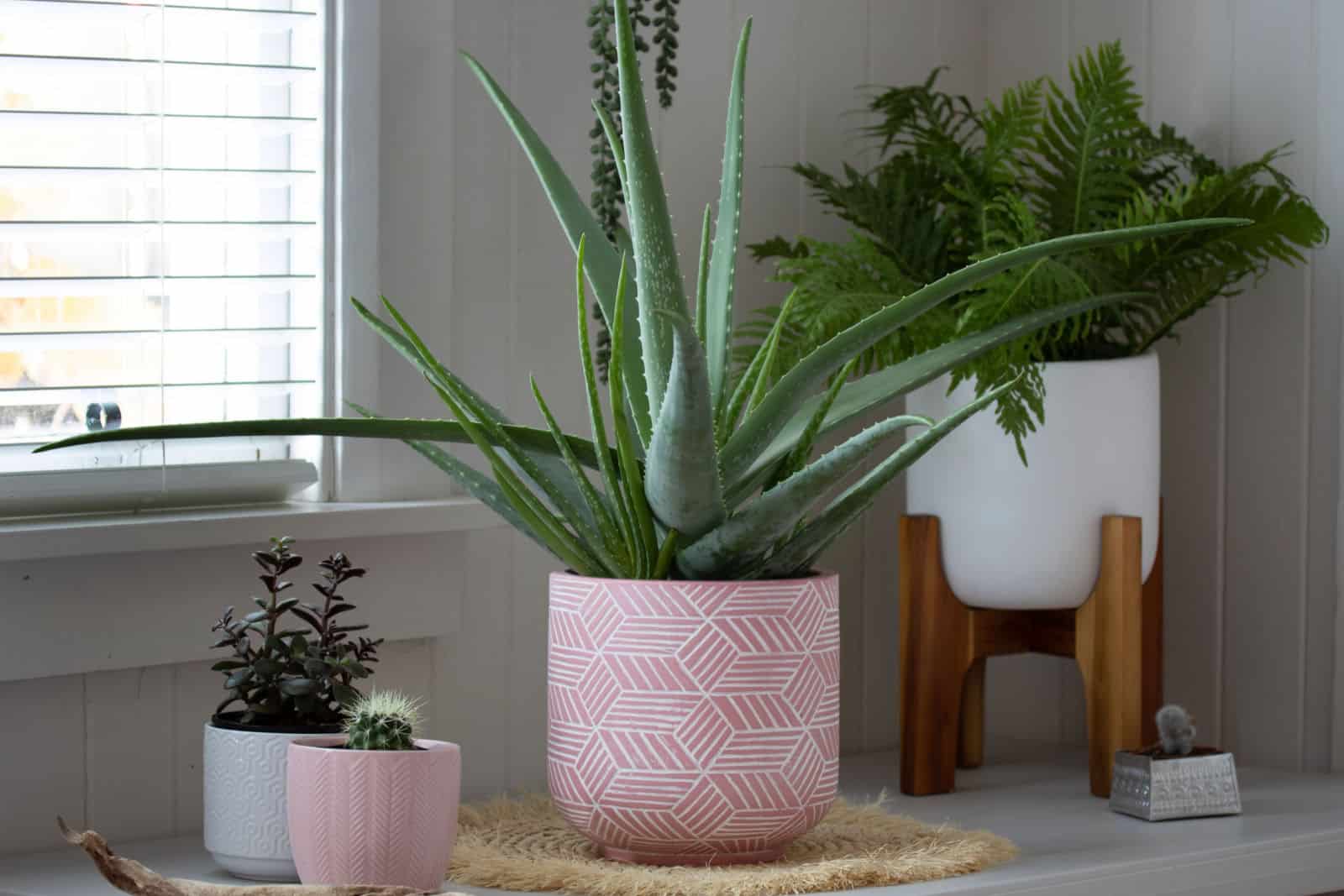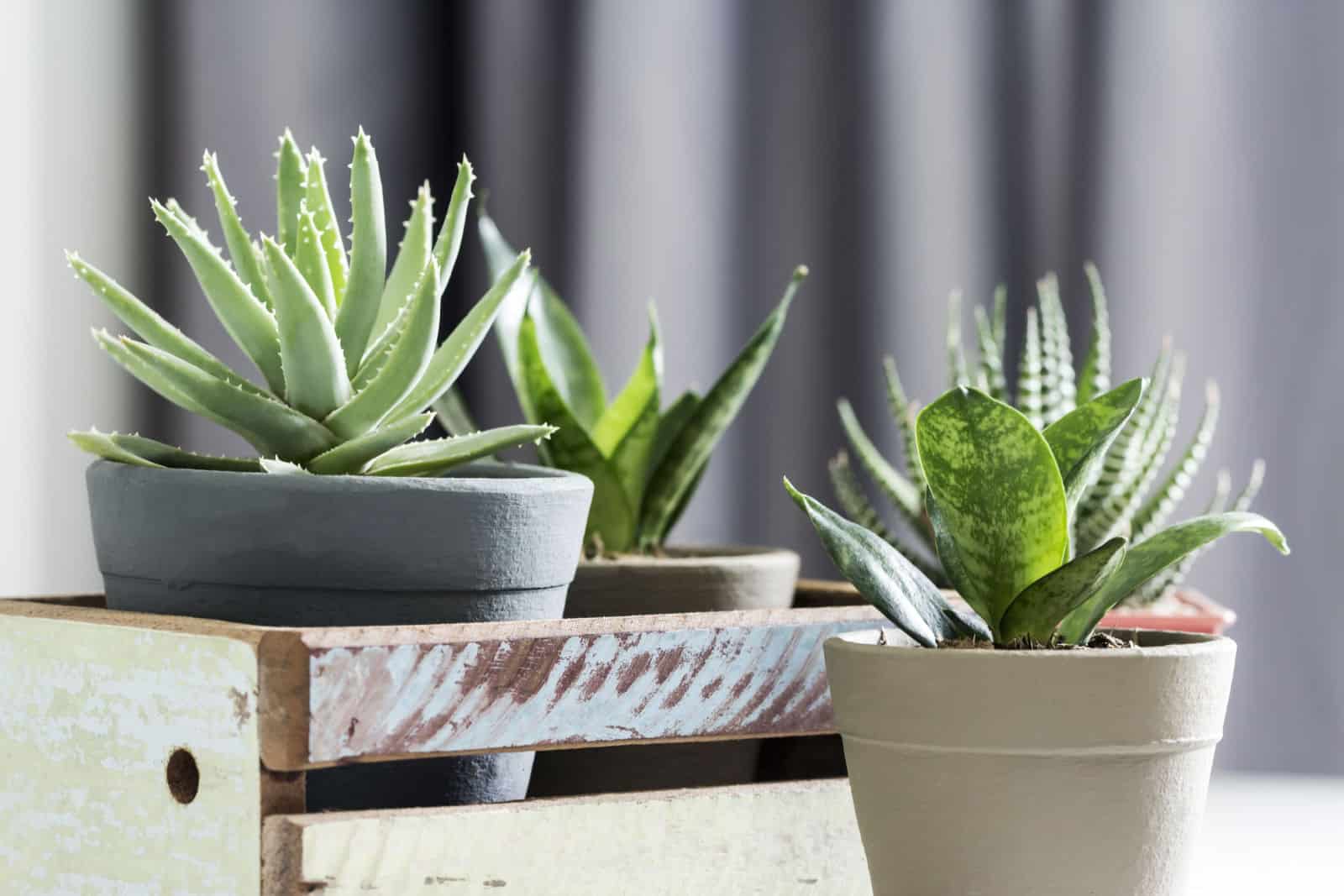Aloe vera is a low-maintenance plant that requires plenty of sunlight, a little bit of water, and a quick-draining potting mix to thrive.
But there’s a mistake we make far too often – exposing our plants to too much direct sunlight.
These plants love full sun, but if you live in a particularly hot climate, the direct midday sun would burn your plant’s green spikes and leave you with a wilting, curling, and discolored aloe vera.
Of course, aloe plant care tells us that you can alleviate these symptoms by changing the location of your plant, watering it, removing the severely burnt foliage, and even replacing the potting soil.
Before we get to the symptoms, treatment, and prevention of a sunburnt aloe vera plant, let’s look at its specifics:
[table id=644 /]
4 Symptoms Of A Sunburnt Aloe Vera Plant
There are many different varieties of aloe plants that require at least six hours of light per day (which we refer to as the “full sun”) in order to flourish.
However, increased sun exposure, especially to direct sunlight, can lead to sunburns, which manifest as leaf discolorations, spots, and curly and wilting foliage.
1. Discolored Leaves
One of the first signs that your aloe vera has burnt in the sun is paling of the foliage. High temperatures and excessive heat cause the breakdown of the chlorophyll and the color of the leaves to fade.
As the light exposure increases (or remains consistently high), the plant leaves would turn yellow and then start browning, which is how you can be certain you’re dealing with sun damage.
Another common way to recognize aloe vera sunburns are reddish-brown leaf tips. These are the thinnest parts of the foliage, which is why they’re among the first to exhibit the symptoms.
2. Leaf Spots
If you own an aloe vera plant, you’ll know that it comes with whitish spots and markings that are no cause for alarm.
However, once you notice brown spots appearing on your spikey buddy, you should be concerned. We also refer to them as sunspots, and they are a common sign that your aloe plant is burning in the direct sunlight.
3. Curly Or Wilting Foliage
If you notice that your aloe vera leaves are bending, it’s probably sunburnt.
However, these symptoms can also appear if you overwater your plants, so always check the potting medium before moving your aloe to a shadier position.
Curling and wilting usually happen if your aloe doesn’t have enough moisture, which is quite common if they’re exposed to high light levels.
4. Soil Drying Out Quickly
If you notice that the potting mix dries out much faster than it used to, consider changing the location of your plant since that can be a sign that you’ve exposed it to too much light.
In high-light conditions, the water from the soil evaporates much faster and your plant drinks it more greedily.
How To Fix A Sunburnt Aloe Vera
A Sunburnt aloe vera plant is anything but attractive (okay, pink and ruddy discolorations may seem charming, but they look rather sickly on your aloe, which is supposed to be green).
Luckily, you can nurture your green buddy back to health by changing its location and watering it thoroughly to replenish the soil moisture.
If the sunburns are too severe, you should remove the discolored foliage, but if the sun only affected the tips, you can leave your plant as it is.
Finally, if these tips don’t help, you can always replenish the potting medium, and we’ll mention why in the final paragraph of this section.
Change Its Location
When you notice sunburns on your aloe leaves, you should immediately take your plant to a more shaded area that gets only indirect sunlight.
Either move it 2-3 feet away from a western window so that the direct sun rays cannot touch it, or place it on an east or south-facing windowsill.
In these locations, your plant will get enough sun exposure to photosynthesize normally and flourish, but without the risk of getting sunburnt. (Morning and late afternoon light aren’t as harsh as midday light, and won’t damage your aloe.)
Finally, if you’ve planted your pointed succulent outside, you can cover it with a shade cloth or even open an umbrella over it to protect it from the noon sunlight.
Water It
Sunburnt succulents are usually rather thirsty, which is why you should water them deeply when you notice the symptoms we mentioned above.
Aloe veras generally don’t require too much water, but those that have spent too much time in the direct sunlight and drunk all the moisture from their potting mix (or it has evaporated in excessive heat) do need a good soak.
Once you notice the symptoms of an underwatered aloe vera (such as wilting and leaf discoloration), you can either irrigate your plant until the excess starts to seep out through the drainage holes, or resort to bottom watering.
For bottom watering, pour some water into a large tray or tub and place your aloe plant pot in it. (The planter has to have drainage holes for this method to work.)
Leave your succulent in it for about 15-20 minutes or as long as it takes for the potting medium to become moist.
Remove The Sunburnt Foliage
Sadly, the sunburnt leaves cannot regain their normal color, which is why you should remove them if the damage is too severe.
This foliage only takes up space where new, healthy leaves could grow.
Of course, if only the tips have gotten burnt, you don’t have to remove an entire leaf; you can leave them as they are.
Replace The Soil And Repot The Plant
If moving your plant to a less-lit location and watering it doesn’t help, consider replacing its growing medium.
Perhaps your plant requires more nutrients, its roots have been all entangled, or they’ve started to rot, which is something you can’t really know without taking your plant out of its container and examining it closely.
If your aloe vera is rootbound, separate its roots gently and pot it in a new, 1-2 sizes larger planter.
You should also use the best cactus and succulent potting mix, which is typically well-draining, aerated, and loose to prevent waterlogging and root rot.
Fresh potting soil is also rich in nutrients and organic matter, and can prevent nitrogen deficiency, which is one of the main causes of pale and yellow leaves (aside from incorrect lighting and watering).
How To Prevent A Sunburnt Aloe Vera Plant
An aloe vera suffering from sunburns isn’t something we want to deal with (especially since it’s supposed to treat them).
Fortunately, you can prevent this issue by keeping your plant at lower light levels, although that can lead to legginess and pale foliage.
So what else can we do?
Acclimating your plant to higher light conditions and watering it at the base is a good way to start.
You might be wondering what water has to do with sunburns, and you’ll find that out in the following paragraphs!
Acclimate The Plant To Direct Sunlight
We all know that succulents aren’t strangers to light, but too much of it too suddenly can damage its fleshy foliage. Therefore, if you notice that your plant needs more light, expose it to it gradually to get it used to those conditions.
This means taking your aloe vera from its usual position, placing it in a sunny location, and keeping it there for no more than 2-3 hours the first day. After that time passes, take it back to its spot.
Continue the same procedure every day, gradually increasing the exposure for an hour or two every day.
Do this until your aloe plant can last in the new location for an entire day without being moved back to its previous place.
This acclimation method can last 1-2 weeks, depending on whether you need to cut back the amount of time your plant spends in the sun.
For instance, if you notice brown spots, tips, or other signs of burning, keep your plant in the sun for shorter periods of time or find a location that isn’t as bright.
Water It At Its Base
Watering plants as close to the potting medium as possible is crucial if you don’t want to deal with burnt foliage. Water drops on leaves can have the same effect as pointing a magnifying glass at them.
Just like a magnifying glass, the droplets focus the UV rays, and even the gentlest of them can have horrifying effects.
Of course, water will sometimes splash and wet the foliage, and in this case you should allow your plant’s leaves to dry out or wipe them yourself before exposing it to the light.
FAQ
Why is my aloe vera turning brown and thin?
The most common cause of brown and thin aloe plants, aside from sun damage, is overwatering, or rather root rot caused by too much moisture in the potting mix.
Therefore, look out for the early symptoms of an overwatered aloe vera, such as droopiness, stunted growth, and yellow leaves. You may also notice an unpleasant smell coming from your plant, and that means that the root rot has progressed.
That’s why you should examine your succulent’s roots as soon as you start suspecting this fungal disease, and if you notice some that are brown, black, or too soft, you should remove them and pot your plant into a fresh growing medium.
Overfertilization can burn your plant’s roots, which then cannot uptake moisture and nutrients properly, eventually leading to browning.
Why is my aloe vera turning pale?
The most common causes of a pale aloe vera are lack of sunlight (hindering the production of chlorophyll), too much light (burning the foliage and disrupting the chlorophyll production), and lack of nitrogen (which prevents proper leaf development).
Of course, an overwatered aloe plant can also turn pale and then yellow, signifying root rot, so don’t dismiss this possibility before thoroughly examining your plant and seeing what could be the case.
What is aloe vera good for?
Aloe vera has anti-inflammatory effects, which is why we use its gel to treat sunburns. It is also packed with antioxidants, such as vitamins C and E and beta-carotene, which lower the risk of cancer, heart diseases, and diabetes.
It has a soothing effect on skin and can be used for treating all sorts of skin conditions, from minor burns and sunburns to acne, psoriasis, etc.
It has a laxative effect, but since it may contain latex, it shouldn’t be taken orally.
Final Thoughts
A sunburnt aloe vera plant is not a sight you want to see, as its brown or pale foliage, brown spots, and wilting and curly leaves are very unattractive.
Therefore, when you notice these symptoms, you should take your plant to a more secluded area, water it (if the soil is too dry and your plant is underwatered), remove the severely burnt leaves, and repot it into new and fresh soil if nothing seems to be working.
Of course, it’s always better to prevent this issue from occurring in the first place, and you can do that by gradually moving your aloe vera to a location with higher light levels.
Watering this plant at its base is also crucial since droplets can create a magnifying glass effect and increase the strength of UV rays.
Good luck, and until next time!

